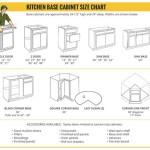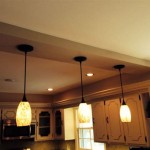Kitchen Sink Manufacturers: A Comprehensive Guide To IC3 Keyword
The kitchen sink, often an overlooked element in kitchen design, is a critical component that significantly impacts functionality and aesthetics. Selecting the right kitchen sink requires careful consideration of various factors including material, size, configuration, and, increasingly, features advertised under the “IC3” keyword. This article aims to provide a comprehensive guide to understanding IC3 in the context of kitchen sink manufacturing, exploring its meaning, implications, and how it influences consumer choices.
The IC3 keyword, while not a standardized industry term, generally refers to a combination of three key features or characteristics associated with modern kitchen sinks. These features often relate to improving hygiene, convenience, and overall user experience. Manufacturers leverage the IC3 concept to market sinks that offer enhanced functionality beyond the traditional basin. Understanding these features is crucial for making an informed purchase decision. It's also crucial to remember that the exact meaning of IC3 can vary between manufacturers, therefore requiring careful examination of individual product specifications.
Understanding the Core Components of IC3
While the precise meaning of IC3 can be fluid, manufacturers generally use it to highlight three key aspects of their kitchen sinks. These often center on enhanced hygiene, improved durability and better convenience. A detailed look at the primary features associated with the IC3 keyword follows:
Hygiene Enhancement: Addressing concerns about bacterial growth and ease of cleaning is a major focus. Sinks marketed under the IC3 banner often feature antimicrobial coatings or materials. These coatings are usually infused with substances like silver ions, which inhibit the growth of bacteria, mold, and mildew. This feature is particularly appealing to consumers concerned about food safety and maintaining a sanitary kitchen environment. The effectiveness of these coatings can vary, so it is essential to research the specific technology used and any independent testing or certifications that support the manufacturer's claims.
In addition to antimicrobial coatings, hygiene can also be improved through design features. For example, sinks with rounded corners and smooth surfaces are easier to clean thoroughly, minimizing the build-up of dirt and grime. The material itself can also contribute; stainless steel, known for its non-porous surface, is a naturally hygienic choice. The presence of seamless welding and smooth transitions between different parts of the sink also reduces areas where bacteria can accumulate.
Enhanced Durability: Kitchen sinks endure significant wear and tear, from exposure to extreme temperatures to the impact of pots and pans. Durability is a key consideration for consumers, and manufacturers often incorporate features that enhance a sink's resistance to damage. This is often achieved through the use of high-quality materials and advanced manufacturing processes.
For stainless steel sinks, the gauge of the steel is a crucial indicator of durability. Lower gauge numbers indicate thicker steel, which is more resistant to dents and scratches. The type of stainless steel also matters; 304-grade stainless steel, containing chromium and nickel, is prized for its corrosion resistance and durability. Other materials like granite composite are also known for their exceptional resistance to heat, scratches, and stains. The manufacturing process, such as the use of heavy-duty reinforcement pads and sound-deadening technology, also contributes to the overall durability of the sink.
Improved Convenience: Convenience features aim to make kitchen tasks easier and more efficient. IC3-marketed sinks often include innovations that improve ergonomics and functionality. These can range from built-in accessories to enhanced drainage systems.
Accessories like cutting boards, colanders, and drainboards that fit seamlessly into the sink are common convenience features. These accessories expand the sink's functionality, allowing users to perform multiple tasks within the sink area. Other convenience features include deeper basins, offset drains (to maximize usable space in the basin), and integrated disposal flanges. The design of the drain system itself can also contribute to convenience. A well-designed drain system will efficiently remove water and food particles while also being easy to clean and maintain.
Material Choices and IC3 Compatibility
The choice of material significantly impacts the features that can be incorporated under the IC3 banner. Different materials offer varying levels of hygiene, durability, and suitability for incorporating convenience features. Here’s a look at some common sink materials and their relevance to the IC3 concept:
Stainless Steel: A popular choice for its durability, stain resistance, and modern aesthetic. Stainless steel readily accommodates antimicrobial coatings and is relatively easy to clean. Convenience features like integrated accessories can also be seamlessly incorporated into stainless steel sink designs. The gauge and grade of the stainless steel play a major role in its overall IC3 compatibility.
Granite Composite: Composed of crushed granite and acrylic resins, granite composite sinks are known for their exceptional durability and resistance to heat and scratches. While antimicrobial properties are not inherent, some manufacturers infuse the material with antimicrobial agents. The solid construction of granite composite allows for the integration of various convenience features, such as custom-fitted accessories.
Fireclay: A durable and visually appealing option, fireclay sinks offer a classic aesthetic. While less inherently hygienic than stainless steel, the smooth, non-porous surface of fireclay is relatively easy to clean. Durability is a key strength of fireclay, though it can be susceptible to chipping if subjected to heavy impact. The integration of convenience features is typically more limited in fireclay sinks compared to stainless steel or granite composite.
Cast Iron: With a porcelain enamel coating, cast iron sinks boast a classic look and durability. However, the enamel coating can be prone to chipping or scratching over time. While cast iron is not inherently antimicrobial, the smooth enamel surface is relatively easy to clean. The weight of cast iron sinks can also be a factor to consider during installation. Similar to fireclay, convenience features are typically less prevalent in cast iron sink designs.
Navigating Marketing Claims and Specifications
When evaluating kitchen sinks marketed with the IC3 keyword, it is crucial to carefully examine the manufacturer's specifications and marketing claims. As IC3 is not a standardized term, the precise features and benefits can vary significantly between different models. Consumers need to be diligent in verifying the accuracy of the claims and understanding the specific technologies or materials used.
Antimicrobial Coatings: Look for details about the specific antimicrobial agent used, such as silver ions or other compounds. Research the efficacy of the agent and any independent testing or certifications that support the manufacturer's claims. Be wary of vague claims about "antimicrobial protection" without specific details.
Durability: For stainless steel sinks, focus on the gauge and grade of the steel. Lower gauge numbers indicate thicker, more durable steel. 304-grade stainless steel is generally preferred for its corrosion resistance. For other materials, such as granite composite, inquire about the composition of the material and any testing data that demonstrates its resistance to heat, scratches, and stains.
Convenience Features: Evaluate the practicality and usability of the integrated accessories or other convenience features. Consider how these features will integrate into your workflow and whether they will truly enhance your kitchen experience. Pay attention to the materials and construction of the accessories to ensure they are durable and easy to clean.
It's equally important to cross-reference manufacturer claims with independent reviews and consumer feedback. Real-world experiences can provide valuable insights into the actual performance and durability of the sink.
Ultimately, the selection of a kitchen sink should be based on a thorough understanding of its features, materials, and how it aligns with the buyer's specific needs and preferences. While the IC3 keyword can serve as a helpful guide to identifying sinks with enhanced functionality, careful evaluation of the individual components is paramount to making an informed decision.

The Stainless Steel Kitchen Sink A Comprehensive Guide To Pros And Co

The Ultimate Guide To Kitchen Sinks Deluxe Bathrooms

The Ultimate Guide To Update Kitchen Sink

The Ultimate Guide To Kitchen Sinks Types Of Impressions Kitchens

Kitchen Sink Guide Grohe

Kitchen Sink Size Guide For Builders Designers Allora Usa

The Ultimate Guide To Kitchen Sinks Victoria Renovations

Best Kitchen Sink Faucets A Comprehensive Guide

Kitchen Sink Guide Grohe

Choosing Your Sink A Complete Guide Saffron Interiors
Related Posts








